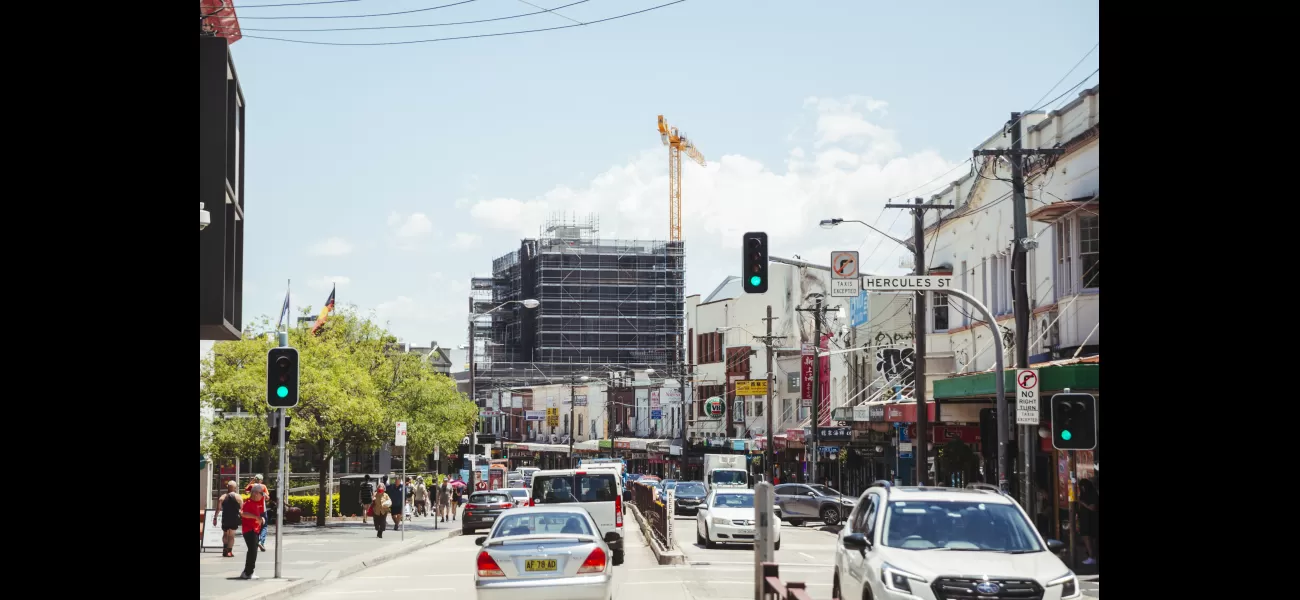Housing crisis worsens as recent data reveals a dire situation.
Australia's plans to tackle high rent and property costs seem to be faltering before they start.
May 30th 2024.

Australia's efforts to meet its housing targets and address the skyrocketing rents and property prices seem to be facing obstacles before they have even begun. According to the latest data from the Australian Bureau of Statistics, the number of approved homes for construction in April was only 13,078, which is a 0.3% decrease from the previous month.
This figure falls short of the 20,000 homes that need to be built each month in order to achieve the federal government's goal of constructing 1.2 million new homes within the next five years, starting in July. However, not all approved homes actually end up being built. In fact, it was recently revealed that almost 40,000 projects that have been given the green light have yet to begin construction, with many of them located in Sydney and Melbourne.
Master Builders Australia, a peak body for the building industry, has expressed concern over the decline in approvals and believes that urgent action needs to be taken. According to their chief economist Shane Garrett, the new National Housing Accord, which aims for 240,000 new homes each year, will kick off in less than five weeks. However, in the past 12 months, only 163,500 new home building approvals have been granted across the country, which falls short of the target. Garrett also pointed out that in the same period, only 60,600 higher-density dwellings were approved, the lowest number in almost 12 years.
The organisation's CEO, Denita Wawn, who previously expressed optimism about meeting the targets, now believes that the government needs to address the challenges facing the construction industry. Otherwise, Australians will continue to suffer from rising rents and property prices. Wawn stressed that urgent action needs to be taken to increase housing production, but some in the government seem to be hindering progress.
The hurdles facing the construction industry are well-known and include delays in approvals, shortages of skilled workers, increases in material costs, outdated industrial relations policies, and inefficient regulations. Wawn emphasized that unless these issues are addressed, the target of 1.2 million new homes by 2029 will not be met. She also warned that if the obstacles are not cleared, the demand for housing will continue to surpass the supply, causing the housing crisis to persist. The community is in desperate need of more housing, but if the government does not take urgent action to support the building industry, the impact of the housing crisis will continue to be felt by all Australians.
This figure falls short of the 20,000 homes that need to be built each month in order to achieve the federal government's goal of constructing 1.2 million new homes within the next five years, starting in July. However, not all approved homes actually end up being built. In fact, it was recently revealed that almost 40,000 projects that have been given the green light have yet to begin construction, with many of them located in Sydney and Melbourne.
Master Builders Australia, a peak body for the building industry, has expressed concern over the decline in approvals and believes that urgent action needs to be taken. According to their chief economist Shane Garrett, the new National Housing Accord, which aims for 240,000 new homes each year, will kick off in less than five weeks. However, in the past 12 months, only 163,500 new home building approvals have been granted across the country, which falls short of the target. Garrett also pointed out that in the same period, only 60,600 higher-density dwellings were approved, the lowest number in almost 12 years.
The organisation's CEO, Denita Wawn, who previously expressed optimism about meeting the targets, now believes that the government needs to address the challenges facing the construction industry. Otherwise, Australians will continue to suffer from rising rents and property prices. Wawn stressed that urgent action needs to be taken to increase housing production, but some in the government seem to be hindering progress.
The hurdles facing the construction industry are well-known and include delays in approvals, shortages of skilled workers, increases in material costs, outdated industrial relations policies, and inefficient regulations. Wawn emphasized that unless these issues are addressed, the target of 1.2 million new homes by 2029 will not be met. She also warned that if the obstacles are not cleared, the demand for housing will continue to surpass the supply, causing the housing crisis to persist. The community is in desperate need of more housing, but if the government does not take urgent action to support the building industry, the impact of the housing crisis will continue to be felt by all Australians.
[This article has been trending online recently and has been generated with AI. Your feed is customized.]
[Generative AI is experimental.]
0
0
Submit Comment





